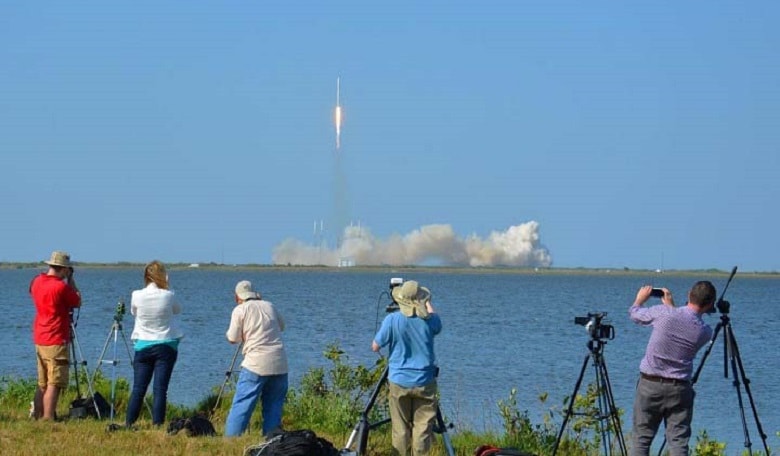Tucked in the trunk of the latest commercial cargo spacecraft to head for the International Space Station (ISS) is an expandable structure that has the potential to revolutionize work and life on the space station.
SpaceX's Dragon spacecraft is delivering almost 7,000 pounds of cargo, including the Bigelow Expandable Activity Module (BEAM), to the orbital laboratory following its launch on a Falcon 9 rocket at 4:43 p.m. EDT from Space Launch Complex 40 at Cape Canaveral Air Force Station in Florida.
The mission is SpaceX's eighth cargo delivery through NASA's Commercial Resupply Services contract. Dragon's cargo will support dozens of the more than 250 science and research investigations taking place on the space station during Expeditions 47 and 48.
"The cargo will allow investigators to use microgravity conditions to test the viability of expandable space habitats, assess the impact of antibodies on muscle wasting, use protein crystal growth to aid the design of new disease-fighting drugs and investigate how microbes could affect the health of the crew and their equipment over a long duration mission," said NASA deputy administrator Dava Newman.
Dragon will be grappled at 7 am Sunday, 10 April by ESA’s British astronaut Tim Peake using the Station's Candarm2 robotic arm, with help from NASA astronaut Jeff Williams.
BEAM will arrive in Dragon's unpressurised trunk and, after about five days, will be removed and attached to the ISS. Expansion is targeted for the end of May. The module will expand to roughly 10 feet in diameter and 13 feet long. During its two-year test mission, astronauts will enter the module for a few hours several times a year to retrieve sensor data and assess conditions.
Expandable habitats are designed to take up less room on a rocket, but provide greater volume for living and working in space once expanded. This first in situ test of the module will allow investigators to gauge how well the habitat protects against solar radiation, space debris and contamination.
Crew members experience significant decreases in bone density and muscle mass during long-duration spaceflight without appropriate nutrition and exercise. One life science investigation on its way to the orbiting laboratory will assess myostatin inhibition as a means of preventing skeletal muscle atrophy and weakness in mice exposed to long-duration spaceflight. Drugs tested on the space station could progress to human clinical trials back on Earth to validate their effectiveness for future space missions.
Dragon will also deliver Microchannel Diffusion, a study of fluids at the nanoscale, or atomic, level. Nanofluidic sensors could measure the air in the space station, or be used to deliver drugs to specific places in the body. The laws that govern flow through nanoscale channels are not well understood, and this investigation simulates those interactions by studying them at the larger microscopic level. This type of research is possible only on the space station, where Earth's gravity is not strong enough to interact with the molecules in a sample, so they behave more like they would at the nanoscale. Knowledge gleaned from the investigation may have implications for drug delivery and particle filtration, as well as future technological applications for space exploration.
Another experiment onboard Dragon is a protein crystal growth investigation focused on drug design and development. Growing protein crystals in microgravity can help researchers avoid some of the obstacles inherent to protein crystallization on Earth, such as sedimentation. One investigation will study the effect of microgravity on the co-crystallization of a membrane protein to determine its three-dimensional structure. This will enable scientists to chemically target and inhibit, with "designer" compounds, an important human biological pathway thought to be responsible for several types of cancer.
The spacecraft is scheduled to depart the space station May 11 for a splashdown in the Pacific Ocean, west of Baja California, bringing almost 3,500 pounds of science, hardware and spacewalking tools back to Earth for further study, including biological samples from NASA's one-year mission.











